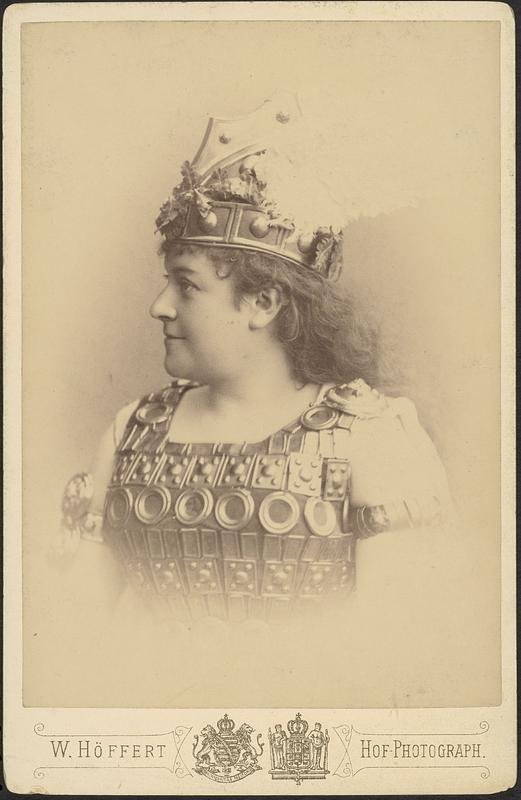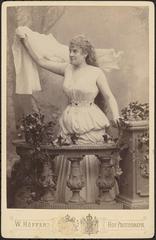
Wrocław Opera: Visiting Hours, Tickets, and Complete Guide to Wrocław Historical Sites
Date: 14/06/2025
Introduction: The Wrocław Opera’s Cultural Significance
Located in the vibrant heart of Wrocław, Poland, the Wrocław Opera (Opera Wrocławska) stands as an enduring symbol of the city’s artistic vitality and architectural grandeur. Established in 1841, the neoclassical opera house at ul. Świdnicka 35 reflects Wrocław’s historical evolution—from its Prussian origins to its modern Polish identity—and remains a thriving center for world-class performances. Its proximity to major landmarks like the Market Square and the National Forum of Music makes it a central attraction for both culture seekers and tourists. Visitors are invited not only to experience performances by Verdi, Mozart, and Puccini, but also to explore the building’s ornate interiors and storied past (Opera Wrocławska Official Website; Wroclaw Guide).
Table of Contents
- The Wrocław Opera: A Cultural Landmark
- Historical Overview
- Visiting Information
- Exploring the Surroundings: Nearby Historical Sites
- Unique Experiences and Annual Events
- Community Engagement and Education
- Frequently Asked Questions (FAQ)
- Visitor Tips
- References and Useful Links
The Wrocław Opera: A Cultural Landmark
The Wrocław Opera is one of Poland’s most distinguished cultural institutions, recognized for its artistic excellence and historical significance. Whether you are a history enthusiast, an opera lover, or a first-time traveler, the opera offers a multifaceted experience: stunning performances, architectural splendor, and access to the city’s broader historical narrative.
Historical Overview
Origins and Development
The origins of the Wrocław Opera date back to the early 19th century, a time of urban and cultural expansion in what was then Breslau under Prussian rule. Construction began in 1839, and the building was completed in 1841 under the guidance of Silesian architect Carl Ferdinand Langhans. The opera’s neoclassical design, modern for its era, included an auditorium for 1,600 spectators (theatre-architecture.eu). Its opening on November 13, 1841, inaugurated a rich tradition of music and theatre that has continued ever since (ebilet.pl).
Architectural Evolution
Langhans’ vision for the opera house embraced harmonious proportions and elegant decoration, setting new standards for theatre architecture in Central Europe (wroclawguide.com). Surviving fires and wartime damage, the opera has been restored multiple times, with great care taken to preserve original 19th-century features such as ceiling frescoes, gilded chandeliers, and the imperial box (theatre-architecture.eu). Restoration efforts have ensured that the opera remains both a functional performance venue and a living museum of neoclassical artistry (ebilet.pl).
Notable Events and Milestones
- The opera’s early years featured premieres that established its reputation across Europe (theatre-architecture.eu).
- Post-war restoration in 1945, highlighted by Stanisław Moniuszko’s “Halka,” marked a new era for Polish culture in Wrocław (Wikipedia).
- Renovations between 1997 and 2006 modernized the building while safeguarding its heritage.
- The tradition of “super-productions”—large-scale performances in venues like Centennial Hall and on the Oder River—has broadened the opera’s audience (Wikipedia).
Visiting Information
Visiting Hours
The Wrocław Opera is open to visitors during performance days, typically Tuesday through Sunday, with performances starting at 19:00 (7:00 PM) on Fridays and Saturdays, and 18:00 (6:00 PM) on Sundays. The box office is generally open Monday to Saturday from 10:00 AM to 6:00 PM, with guided tours available on select days, usually between 10:00 AM and 4:00 PM (Visit Wrocław; Opera Wrocławska).
Tickets and Booking
Tickets can be purchased online via the official Opera Wrocławska website, at the box office, or through authorized partners (Operabase). Prices vary by seat and performance, generally ranging from 50 PLN to over 200 PLN. Discounts are available for students, seniors, families, and groups. Early booking is recommended for popular shows and special events.
Seasonal subscriptions and carnets offer savings for regular patrons (Wrocław Turysta). Gift vouchers and standing-room tickets are also available.
Accessibility
The opera is committed to accessibility, offering:
- Wheelchair access and accessible restrooms
- Designated seating for visitors with disabilities
- Assistance upon request—contact the box office ahead of your visit
- Surtitles in Polish and English for major productions (Operabase)
Guided Tours and Special Events
Guided tours of the opera, including backstage areas and historical highlights, are available by prior arrangement. Tours are primarily in Polish, but English-speaking guides may be arranged. The opera is renowned for its spectacular “supershows”—grand, open-air productions staged in iconic locations such as Centennial Hall or along the Oder River (Visit Wrocław).
Dress Code and Visitor Etiquette
Smart casual or semi-formal attire is recommended; gala premieres often see guests in formal wear. Arriving at least 30 minutes before the performance is advised for a smooth entry and to enjoy the elegant foyer. Please silence mobile devices and refrain from photography or recording during performances. Applause is customary at the end of arias and acts (Glue Sticks & Gumdrops).
Exploring the Surroundings: Nearby Historical Sites
The Wrocław Opera’s central location makes it an excellent starting point for exploring the city’s rich heritage:
- Market Square (Rynek): One of Europe’s largest medieval squares, filled with colorful townhouses and cafés.
- Salt Square (Plac Solny): Famous for its 24-hour flower market.
- St. Elizabeth’s Church: Offers panoramic views from its tower.
- Jatki (The Shambles): A historic street with art galleries and unique bronze animal sculptures.
- Cathedral Island (Ostrów Tumski): The oldest part of Wrocław, known for its Gothic cathedrals.
Combine your opera visit with a stroll through these landmarks to enrich your cultural itinerary (thecrazytourist.com; polandtraveltours.com).
Unique Experiences and Annual Events
The Wrocław Opera’s calendar features annual highlights, including:
- “Supershows” in outdoor venues, drawing thousands of spectators
- Gala premieres and special themed events
- Participation in citywide festivals such as the Wrocław Jazz Festival and Christmas Market (Local Life Wroclaw; Facts.net)
Family matinees, educational workshops, and behind-the-scenes tours are available for visitors of all ages (Wrocław Turysta).
Community Engagement and Education
The opera is deeply committed to broadening access to the arts:
- Discounted tickets for students, seniors, and families
- Educational programs for children and youth, including workshops and performances by the Children’s Choir
- Collaborations with local schools, universities, and cultural institutions
- Opportunities for emerging artists through masterclasses and competitions (Operabase; Polish Opera Now)
Frequently Asked Questions (FAQ)
What are the Wrocław Opera’s visiting hours?
The opera is open for performances Tuesday through Sunday, with the box office operating Monday to Saturday, 10:00 AM–6:00 PM. Guided tours are available on select days—check the official website for details.
How do I buy tickets?
Purchase tickets online through the official ticket portal, at the box office, or via authorized vendors. Early booking is advised.
Is the opera accessible for people with disabilities?
Yes. Wheelchair access, accessible restrooms, and assistance are available. Please contact the box office in advance for arrangements.
Are guided tours available?
Yes, by prior arrangement. Tours can include the main auditorium, backstage, and historical features.
Is there a dress code?
Smart attire is encouraged; formal dress is common for premieres, but casual elegant clothing is suitable for regular performances.
Can I take photos inside?
Photography is allowed in public areas and during tours, but not during performances.
Visitor Tips
- Book Early: Reserve tickets ahead of time for the best seats.
- Arrive Early: Allow time to enjoy the foyer and settle in.
- Dress Appropriately: Smart attire enhances the opera experience.
- Use Public Transport: The central location is easily accessible by tram and bus; parking may be limited.
- Combine Visits: Explore nearby historical sites before or after the performance.
- Language: Most productions are in original languages; surtitles are provided in Polish and sometimes English.
- Amenities: Cloakroom, restrooms, café/bar, and a souvenir kiosk are available.
References and Useful Links
- Opera Wrocławska Official Website
- Wroclaw Guide: Most Impressive Buildings
- Local Life Wroclaw – What’s On
- Operabase: Wrocław Opera
- Wrocław Turysta – Opera Visitor Tips
- Visit Wrocław – Opera
- Poland Travel Tours – Old Town Attractions
- Wikipedia: Wrocław Opera
- Facts.net – Wrocław
- Prima Classic – Wrocław Opera Orchestra
- Polish Opera Now – 2024/25 Season
- The Crazy Tourist – Things to Do in Wrocław
- Glue Sticks & Gumdrops – Opera Etiquette
- Secret Attractions – Wrocław Cultural Venues
- Weather25 – Wrocław in June
- Best Time To Visit Wrocław
Conclusion
The Wrocław Opera stands as a testament to the city’s dynamic blend of history, art, and community. Its rich programming, accessible facilities, and central location make it a must-visit for anyone traveling to Wrocław. For the latest information on performances, visiting hours, and tickets, consult the official Wrocław Opera website. Enhance your cultural journey by downloading the Audiala app, and explore Wrocław’s many historical treasures for a truly memorable visit.












































